Keith Thomas in LRB:
I once asked the great historian Richard Southern whether he would like to have met any of the medieval saints and churchmen about whom he wrote so eloquently. He gave a cautious reply: ‘I think they probably had very bad breath.’ He may have been right about that, but it would be wrong to infer that this was something which didn’t bother them. The men and women of the Middle Ages may have had a greater aversion to unpleasant body odours than their descendants do now. If so, this was bad luck, for they were much more likely to encounter them than we are in our deodorised world.
In the tenth century the Welsh ruler Hywel Dda allowed wives a marital separation if their husbands had stinking breath. In later centuries, books on courtesy warned readers against inflicting their personal smell on their neighbours at dinner: for example, by blowing on their soup to cool it. In 1579 an Essex woman was reported to the archdeacon’s court for refusing to sit in her appointed place in church because it put her next to someone with ‘a strong breath’. The chaplain to James I’s wife, Queen Anne, held that of ‘all the noisome scents, there is none so rammish and so intolerable as that which proceeds from man’s body ... I will not speak of his filth issuing from his eares, his eyes, nostrils, mouth, navel, and the uncleane parts.’ Even Jacobean bees were sensitive to unpleasant odours: an authority warned their keepers against approaching a hive ‘with a stinking breath caused by eating leeks, onions, garlic, etc’, though he added helpfully that such ‘noisomeness’ could be corrected by a cup of beer. There was no such cure for the hideous smells of hell, which were variously compared to those of the pox, tobacco, polecats and gaols. By contrast, all offerings to God had to be sweet-smelling, as the Old Testament made clear. Hence the liturgical use of incense.
The literary critic Caroline Spurgeon once argued that Shakespeare had an acute sense of smell and was particularly sensitive to the bad odours of unwashed humanity and decaying corpses. He almost certainly shared Coriolanus’s disgust for the ‘rank-scented many’ and their ‘stinking breaths’. Conversely, his Venus tells Adonis that, even if she lost every sense save that of smell, she would still adore him: ‘For from the still’ory of thy face excelling/Comes breath perfum’d that breedeth love by smelling.’ Spenser shared this belief in the erotic power of body odour, comparing his beloved’s head and bosom to a sweet-smelling garden: ‘Such fragrant flowres doe give most odorous smell,/but her sweet odour did them all excel.’
None of this appears in Robert Muchembled’s Smells, whose lively account is much indebted to his compatriot Alain Corbin’s The Foul and the Fragrant (published in an English translation in 1986) and is almost entirely confined to the history of odours in France. He makes no reference to the pioneering work on early modern smells by Mark Jenner, a British historian at the University of York. But Muchembled’s guiding assumption, that human reactions to smells are not innate, but are shaped by experience, is as valid for England as it is for France. Our pleasure in smelling a rose and our disgust at some rotting piece of carrion are equally matters of culture rather than nature; there is nothing intrinsic about them. Muchembled points out that it takes European children at least four or five years to learn to be disgusted by their own excrement.
More here.
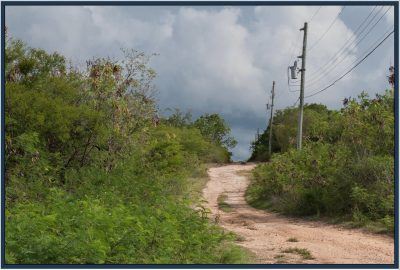 Anguilla is a sandbar ten miles long. It’s three miles wide if you’re being generous, but generous isn’t a word that pairs well with the endowments of a small, arid skerry of sand pocked with salt ponds.
Anguilla is a sandbar ten miles long. It’s three miles wide if you’re being generous, but generous isn’t a word that pairs well with the endowments of a small, arid skerry of sand pocked with salt ponds. 

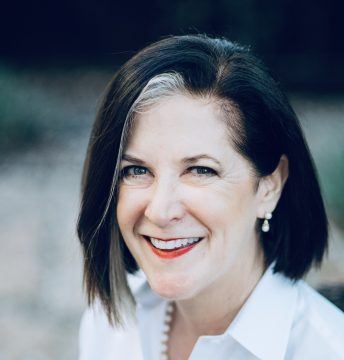
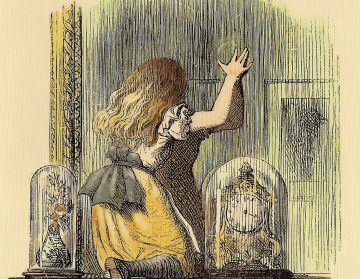 An unconquerable anger has gripped the democratic world. The public seethes with feelings of grievance and seems ready to wreak havoc at any provocation. The spasm of fury that swept the United States after the death of George Floyd cost 19 additional lives and
An unconquerable anger has gripped the democratic world. The public seethes with feelings of grievance and seems ready to wreak havoc at any provocation. The spasm of fury that swept the United States after the death of George Floyd cost 19 additional lives and  There it floated, a luminous orange doughnut, glowing and fuzzy-edged, against a sea of darkness (Figure 1, below). Had it arrived without headline or caption, the world’s first ever image of a black hole might not have been recognised. Relayed across global news media, in April 2019, with appropriate fanfare and explanation, it caused the kind of stir you might expect of a scientific breakthrough. Prior to this, black holes had been ‘seen’ with the eye only through the images of science fiction. But now that we had a visual fix on black holes, an entity known only through abstract theory and via its gravitational effects on other bodies, were we any the wiser about them?
There it floated, a luminous orange doughnut, glowing and fuzzy-edged, against a sea of darkness (Figure 1, below). Had it arrived without headline or caption, the world’s first ever image of a black hole might not have been recognised. Relayed across global news media, in April 2019, with appropriate fanfare and explanation, it caused the kind of stir you might expect of a scientific breakthrough. Prior to this, black holes had been ‘seen’ with the eye only through the images of science fiction. But now that we had a visual fix on black holes, an entity known only through abstract theory and via its gravitational effects on other bodies, were we any the wiser about them?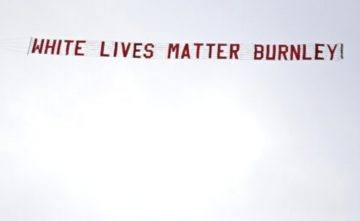 “White Lives Matter Burnley!” ran the banner trailed by a plane above the Etihad stadium, Manchester City’s ground, during a match with Burnley in June. Since the Premier League resumed after the coronavirus hiatus, players and officials have “taken the knee” at the start of matches in solidarity with the Black Lives Matter movement against racism and police brutality.
“White Lives Matter Burnley!” ran the banner trailed by a plane above the Etihad stadium, Manchester City’s ground, during a match with Burnley in June. Since the Premier League resumed after the coronavirus hiatus, players and officials have “taken the knee” at the start of matches in solidarity with the Black Lives Matter movement against racism and police brutality.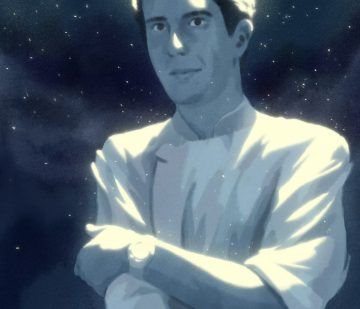 As late as 1999, Anthony Bourdain’s principal vocation remained his position as executive chef at the venerable but self-consciously middle-brow steak-frites joint Les Halles, on Park Avenue between 28th and 29th streets in Manhattan. Always a blessing and a curse, Bourdain’s restless mind continuously kicked the tires on other career avenues—Random House had published his Elmore Leonard–style culinary crime novel Bone in the Throat a few years previous—but by no means was he walking away from his calling in the kitchen. He was 43 years old, rode hard and put up wet, a recovering addict with a number of debts and a penchant for finding trouble in failing restaurants across the city. At Les Halles—at last—he had found sustained success and something resembling stability. This is what Anthony Bourdain would have had us believe.
As late as 1999, Anthony Bourdain’s principal vocation remained his position as executive chef at the venerable but self-consciously middle-brow steak-frites joint Les Halles, on Park Avenue between 28th and 29th streets in Manhattan. Always a blessing and a curse, Bourdain’s restless mind continuously kicked the tires on other career avenues—Random House had published his Elmore Leonard–style culinary crime novel Bone in the Throat a few years previous—but by no means was he walking away from his calling in the kitchen. He was 43 years old, rode hard and put up wet, a recovering addict with a number of debts and a penchant for finding trouble in failing restaurants across the city. At Les Halles—at last—he had found sustained success and something resembling stability. This is what Anthony Bourdain would have had us believe.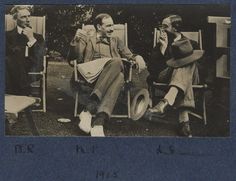 Jonathan Kirschner in Boston Review:
Jonathan Kirschner in Boston Review: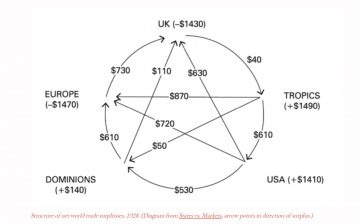 Herman Mark Schwartz in Phenomenal World:
Herman Mark Schwartz in Phenomenal World: John Altmann and Bryan W. Van Norden in the NYT:
John Altmann and Bryan W. Van Norden in the NYT: Faisal Devji reviews Judith Butler’s The Force of Nonviolence, in the LA Review of Books:
Faisal Devji reviews Judith Butler’s The Force of Nonviolence, in the LA Review of Books: John Robert Lewis was born in 1940 near the Black Belt town of Troy, Alabama. His parents were sharecroppers, and he grew up spending Sundays with a great-grandfather who was born into slavery, and hearing about the lynchings of Black men and women that were still a commonplace in the region. When Lewis was a few months old, the manager of a chicken farm named Jesse Thornton was lynched about twenty miles down the road, in the town of Luverne. His offense was referring to a police officer by his first name, not as “Mister.” A mob pursued Thornton, stoned and shot him, then dumped his body in a swamp; it was found, a week later, surrounded by vultures.
John Robert Lewis was born in 1940 near the Black Belt town of Troy, Alabama. His parents were sharecroppers, and he grew up spending Sundays with a great-grandfather who was born into slavery, and hearing about the lynchings of Black men and women that were still a commonplace in the region. When Lewis was a few months old, the manager of a chicken farm named Jesse Thornton was lynched about twenty miles down the road, in the town of Luverne. His offense was referring to a police officer by his first name, not as “Mister.” A mob pursued Thornton, stoned and shot him, then dumped his body in a swamp; it was found, a week later, surrounded by vultures.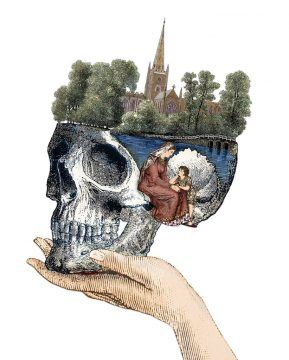 “Hamnet” is an exploration of marriage and grief written into the silent opacities of a life that is at once extremely famous and profoundly obscure. Countless scholars have combed through Elizabethan England’s parish and court records looking for traces of William Shakespeare. But what we know for sure, if set down unvarnished by learned and often fascinating speculation, would barely make a slender monograph. As William Styron once wrote, the historical novelist works best when fed on short rations. The rations at Maggie O’Farrell’s disposal are scant but tasty, just the kind of morsels to nourish an empathetic imagination. We know, for instance, that at the age of 18, Shakespeare married a woman named Anne or Agnes Hathaway, who was 26 and three months pregnant. (That condition wasn’t unusual for the time: Studies of marriage and baptism records reveal that as many as one-third of brides went to the altar pregnant.) Hathaway was the orphaned daughter of a farmer near Stratford-upon-Avon who had bequeathed her a dowry. This status gave her more latitude than many women of her time, who relied on paternal permission in choosing a mate.
“Hamnet” is an exploration of marriage and grief written into the silent opacities of a life that is at once extremely famous and profoundly obscure. Countless scholars have combed through Elizabethan England’s parish and court records looking for traces of William Shakespeare. But what we know for sure, if set down unvarnished by learned and often fascinating speculation, would barely make a slender monograph. As William Styron once wrote, the historical novelist works best when fed on short rations. The rations at Maggie O’Farrell’s disposal are scant but tasty, just the kind of morsels to nourish an empathetic imagination. We know, for instance, that at the age of 18, Shakespeare married a woman named Anne or Agnes Hathaway, who was 26 and three months pregnant. (That condition wasn’t unusual for the time: Studies of marriage and baptism records reveal that as many as one-third of brides went to the altar pregnant.) Hathaway was the orphaned daughter of a farmer near Stratford-upon-Avon who had bequeathed her a dowry. This status gave her more latitude than many women of her time, who relied on paternal permission in choosing a mate. One night in August 2005, just after I’d moved to Wilkes-Barre, Pennsylvania, for a job as a theology professor, I needed beer. To get to the distributor, I drove over a concrete bridge, its four pylons etched with words like “Perseverance” and “Industry” and topped by monumental eagles. Once there, I wandered through the pallets of warm cases trying to find a thirty-pack of PBR until the thin, gruff man behind the counter asked what I was looking for. I told him, he pointed to the right pallet, and I met him at the register.
One night in August 2005, just after I’d moved to Wilkes-Barre, Pennsylvania, for a job as a theology professor, I needed beer. To get to the distributor, I drove over a concrete bridge, its four pylons etched with words like “Perseverance” and “Industry” and topped by monumental eagles. Once there, I wandered through the pallets of warm cases trying to find a thirty-pack of PBR until the thin, gruff man behind the counter asked what I was looking for. I told him, he pointed to the right pallet, and I met him at the register.